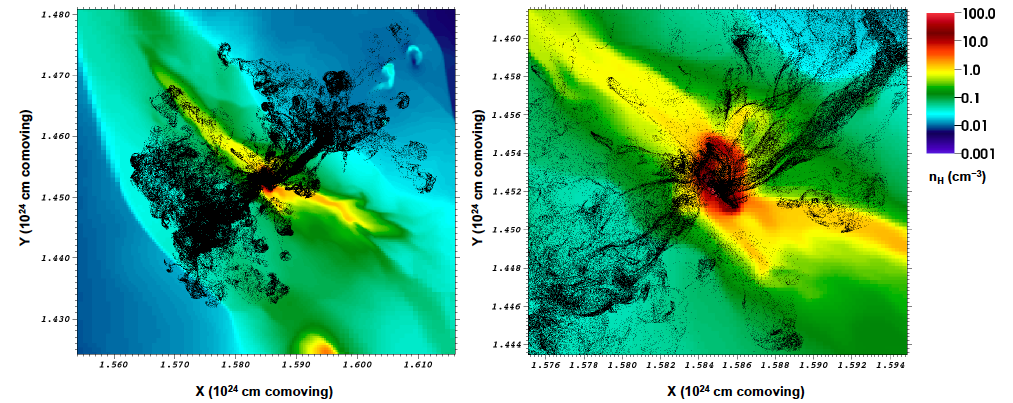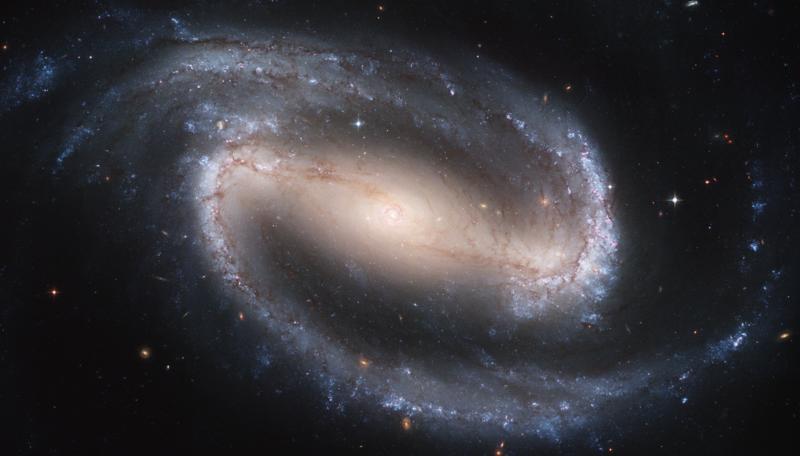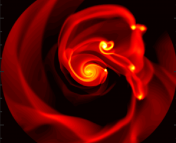- Title: Confined Population III Enrichment and the Prospects for Prompt Second-Generation Star Formation
- Authors: Jeremy S. Ritter, Chalence Safranek-Shrader, Orly Gnat, Milos Milosavljevic, Volker Bromm
- First author’s institution: Department of Astronomy, University of Texas, 1 University Station C1400, Austin, TX 78712.
In typical astronomer fashion, we refer to relatively young, metal-rich stars like the Sun as “Population I” stars and older, less metal-rich stars as “Population II” stars. As Chris Faesi explained in his Thanksgiving astrobite, the first stars are called “Population III” stars. Since the Universe was almost entirely hydrogen and helium when Population III stars formed, the first stars had incredibly low metallicities. Astronomers have never observed a Population III star (and likely never will), but these stars are believed to have been massive and short-lived.
The first simulations of Population III star formation produced stars with masses greater than 100 solar masses. These enormous stars would have been so luminous that their radiation would have photoionized the surrounding intergalactic medium in addition ionizing the “cosmic minihalo” in which the star was born. The giant stars would burn quickly and brightly before exploding as incredibly energetic (1053 ergs!) pair-instability supernovae and generating over 100 solar masses of metals. The metal-rich ejecta would be catapulted away from the star and spread throughout the surrounding intergalactic medium. The ejecta would be widely dispersed, so the explosion would not significantly change the metallicity of the intergalactic medium. However, the slight change in metallicity might be enough to allow lower-mass halos to collapse into the first generation of lower-mass Population II stars.
While extremely massive stars are an intriguing possibility, recent numerical simulations have revealed that Population III star formation might be disrupted before stars grow to hundreds of solar masses. As Nathan Goldbaum explained in this astrobite, one cut-off mechanism is that ionizing radiation from a growing Population III star could photoevaporate the accretion disk and prevent the star from becoming more massive. If Population III stars had masses between 1 and 50 solar masses instead of hundreds of solar masses, then the chemical enrichment history of the early universe would have been strikingly different.
In this paper, Ritter et al. explore the possibility that Population III stars did not have extreme masses. They conduct a cosmological hydrodynamical simulation in which they determine the region of space ionized by a Population III star and then track the motion of the metal-rich ejecta produced when the star explodes as a standard Type II supernova. The figure below shows a snapshot of the simulation 40 million years after the explosion.

A snapshot of the simulation 40 million years after the supernova explosion. The left panel is a 1.1 kpc by 1.1 kpc box centered on the explosion and the right panel is zoomed in to 360 pc by 360 pc. In both panels, the black points show the metal particles in projection and the colored image is a slice through the hydrogen density color-coded according to the scale at upper right. The majority of the metal particles have slowed down and are now falling back onto the halo center. Figure 5 from Ritter et al. 2012.
At this point, most of the metal-bearing ejecta (black points) is falling back on the star and hydrogen gas (colored) is still spiraling into the system. The central core of the system is not resolved by the simulation, but if the metal-rich ejecta mixes with the infalling hydrogen gas in the central core, then the metallicity of the mixture should be high enough to produce Population II stars. This result suggests that the formation of Population II stars is possible even if the first stars were not supermassive. Future simulations with higher resolution and more star formation physics may be able to resolve the central core and track the birth of Population II stars from the mix of infalling primordial gas and metal-rich supernova ejecta.





Trackbacks/Pingbacks